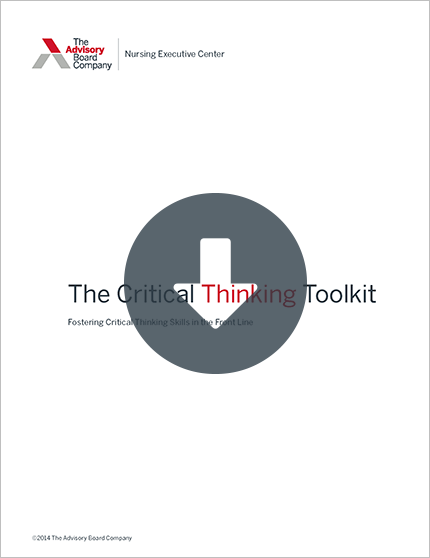Auto logout in seconds.
Continue LogoutFive years ago, Seattle Children's Hospital implemented so-called "waterfall" shifts in the ED—leading to a "dramatic" decrease in patient handoffs, improvements in patient safety, and greater collaboration among physicians, according to a recent study, Christopher Cheney reports for Health Leaders Media.
Here are the 15 tactics to reduce avoidable ED utilization
Why Seattle Children's traditional staffing model led to delays, stress, and confusion
Before Seattle Children's implemented the new staffing model, its attending physicians in the ED worked shifts that lasted seven to nine hours. At the end of each shift, the outgoing physician signed out the entire patient list to the incoming physician and departed.
The problem, Seattle Children's officials discovered, was that important information about patients was often miscommunicated or left out during handoffs. Further, the model led to:
- Delays in patient care while trainees and nurses updated incoming physicians on handed-off patients;
- Longer shifts for physicians, who had to stay to finish charting; and
- Added stress for patients who arrived during handoffs.
To address those issues and "decrease the number of patients who require handoff at the end of the first attending physician's shift," Seattle Children's adopted a so-called "waterfall" model, in which attending physicians' shifts overlap.
For example, when an attending physician arrives to start a shift, he or she assumes a primary role for about three to five hours—until the next attending physician arrives, at which point he or she assumes the primary role for treating new patients.
For the remainder of the first physician's shift, he or she assumes a secondary role, completing work on existing patients and helping to treat new, less complex patients who can be discharged before the shift's end.
What happened after 'waterfall' shifts were introduced
After analyzing more than 43,000 patient encounters from Seattle Children's ED, Hiromi Yoshida, an ED physician at Seattle Children's, and her colleagues found that patient handoffs decreased by 25% after the waterfall model was implemented.
The researchers published their findings in the Annals of Emergency Medicine.
According to Yoshida, the reduction in patient handoffs lead to other "efficiency gains," including:
- Fewer interruptions and interactions in the ED, which reduced the "excessive cognitive workload" that could "negatively affect [physician] performance"; and
- More time for incoming physicians to treat patients.
In addition, the researchers said the model enabled physicians to collaborate with other providers throughout their shifts, rather than only during a quick patient handoff. The model also gives physicians more time to complete charts before the end of their shift, increasing their likelihood of leaving work on time.
What can other hospitals learn from Seattle Children's example?
According to Yoshida, most EDs can successfully adopt a waterfall scheduling model if they focus on three factors:
- Gaining buy-in from all parties who will be affected by the shift changes, including attending physicians and charge nurses;
- Seeking backing from hospital leadership who must support the implementation of the model and the affected staff; and
- Providing adequate care space for incoming physicians to meet and evaluate new patients efficiently.
"We are continuing to monitor feedback from the division and improvements are made to the model as the environment changes," Yoshida said. "This is a QI project and we aim to continuously improve," (Cheney, Health Leaders Media, 10/15).
Primer series: How to address avoidable ED utilization
Are specific patient populations making up a significant proportion of avoidable ED visits at your organization? In each primer, we profile organizations who have set up targeted programs and feature operational, staffing, and funding information.
Don't miss out on the latest Advisory Board insights
Create your free account to access 1 resource, including the latest research and webinars.
Want access without creating an account?
You have 1 free members-only resource remaining this month.
1 free members-only resources remaining
1 free members-only resources remaining
You've reached your limit of free insights
Become a member to access all of Advisory Board's resources, events, and experts
Never miss out on the latest innovative health care content tailored to you.
Benefits include:
You've reached your limit of free insights
Become a member to access all of Advisory Board's resources, events, and experts
Never miss out on the latest innovative health care content tailored to you.
Benefits include:
This content is available through your Curated Research partnership with Advisory Board. Click on ‘view this resource’ to read the full piece
Email ask@advisory.com to learn more
Click on ‘Become a Member’ to learn about the benefits of a Full-Access partnership with Advisory Board
Never miss out on the latest innovative health care content tailored to you.
Benefits Include:
This is for members only. Learn more.
Click on ‘Become a Member’ to learn about the benefits of a Full-Access partnership with Advisory Board
Never miss out on the latest innovative health care content tailored to you.

